With 302 days transmitting after being tagged in Golfo Nuevo, and having broken the historical record of transmission time during this project, Amalthea´s satellite device stopped transmitting on July 26, 2022, thus ending the 2021-2022 season of the #TrackingWhales Project. She was the last whale transmitting, out of 18 whales from the Peninsula Valdés population tagged with satellite devices in September 2021, each which of could be followed daily on the website www.siguiendoballenas.org.
Two months after the inauguration of a new season, we will make a quick summary of last season’s most outstanding results.
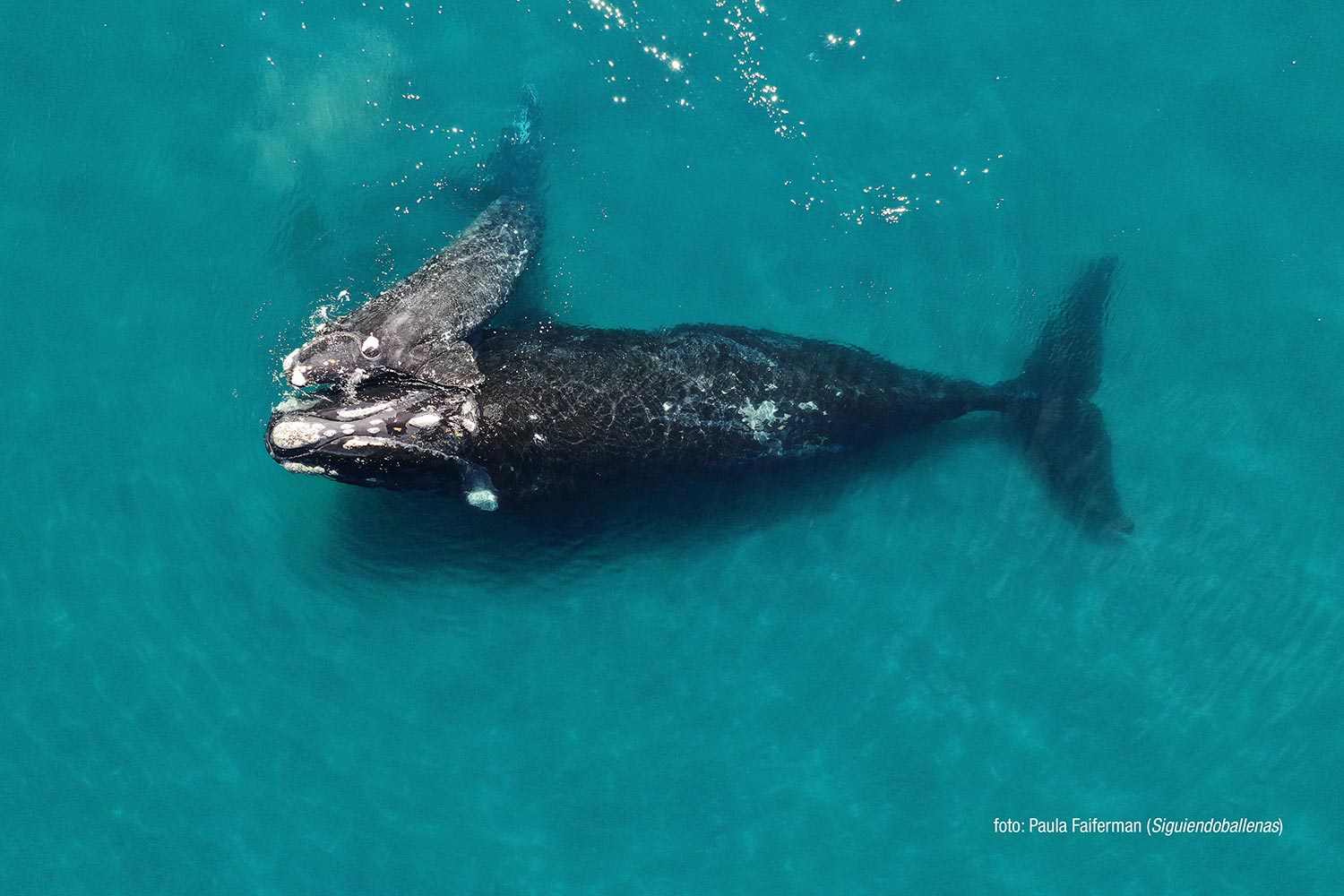
Friday, August 12, 2022 – The sixth season of the #TrackingWhales Project ended having recorded highly important information, some unique and unprecedented—in the history of the Southern Right Whale. The travels of these 18 whales to their feeding areas were tracked by satellite during the past months to locate key environments in the life cycle of this species in the South Atlantic, and to gather relevant information for their conservation.
This project is carried out due to the combined efforts of the Laboratorio de Mamíferos Marinos del CESIMAR-CONICET, CIMA-CONICET, ESCiMar de la Universidad Nacional del Comahue, Fundación Patagonia Natural, Instituto Aqualie, Instituto de Conservación de Ballenas (ICB), Marine Ecology and Telemetry Research, National Oceanic and Atmospheric Administration, Programa de Monitoreo Sanitario Ballena Franca Austral, University of California, Davis – Wildlife Health Center, and Wildlife Conservation Society Argentina (WCS).
As a result of the teamwork of members of these institutions since 2014, the migratory routes of 65 individuals have been recorded, and in the spring of 2022 we plan to add about 20 more. During the sixth season of the project 18 whales were tagged in the reproductive area of Peninsula Valdés, Chubut, Argentina. The routes traveled by these whales, and their individual stories, during these last two seasons can be followed on the website www.siguiendoballenas.org. Below, we share the most important events registered during this last season.
AMALTHEA AND THE TRANSMISSION RECORD
Amalthea’s satellite device broke the record of transmissions: 302 days from when she was tagged in the reproductive area of Valdés in September 2021. The technological advances incorporated in the satellite transmitters in the last seasons made it possible to increase the average transmission period to around 259 days each for the 6 long duration transmitters deployed, which is another new record for this project.
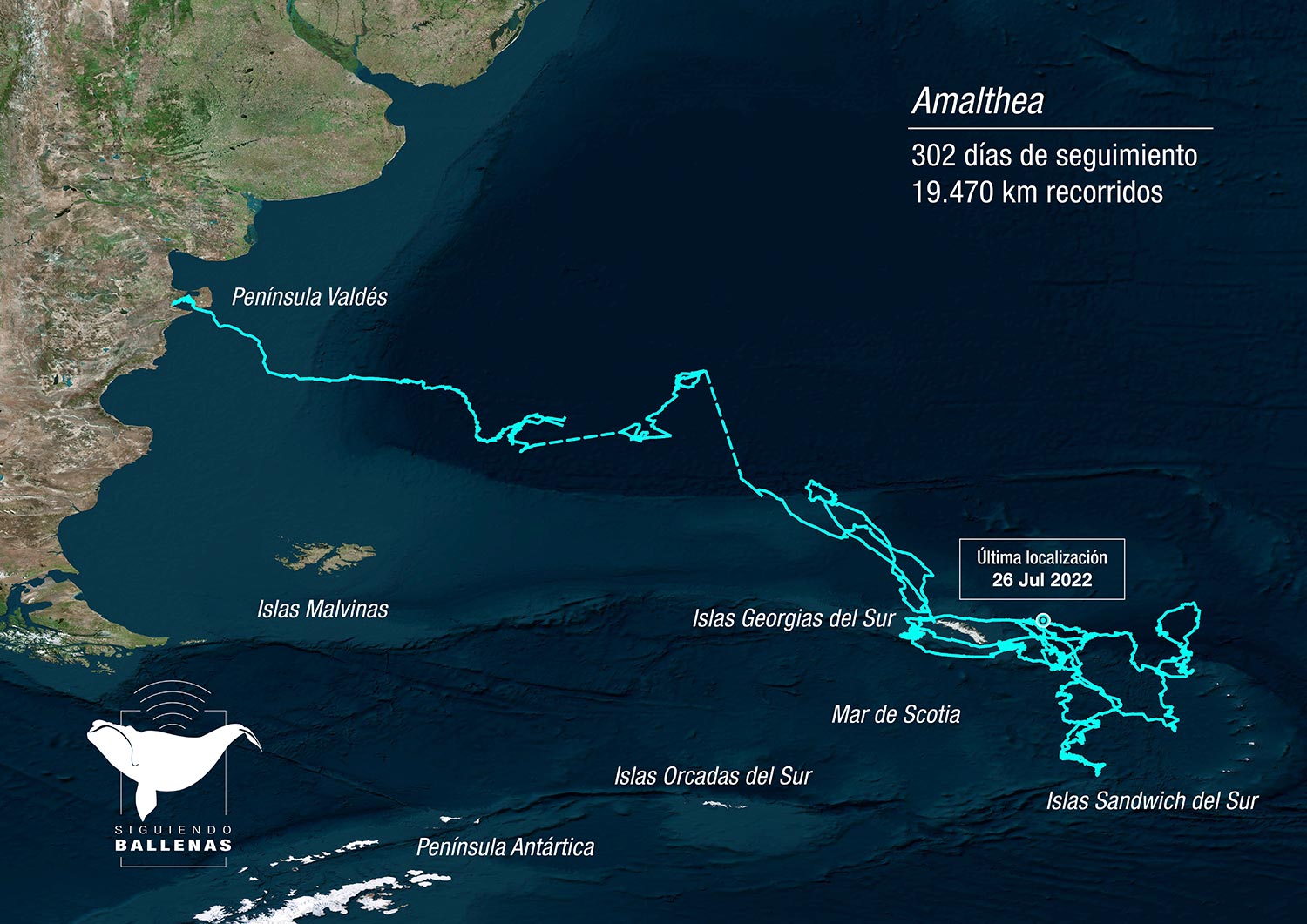
ELECTRA AND THE FIRST COMPLETE MIGRATORY ROUTE RECORDED FOR A SOUTHERN RIGHT WHALE WITH CALF
During 248 days we followed the travels of Electra, an adult female with calf, who left the waters of Peninsula Valdés on November 6, 2021 and after traveling 18,368 kilometers (11,413 miles) between latitudes 41° and 49°S, was once more sighted with her calf on June 5, close to the Faro de Punta Tehuelche in Golfo San José. Both mother and calf were in perfect condition
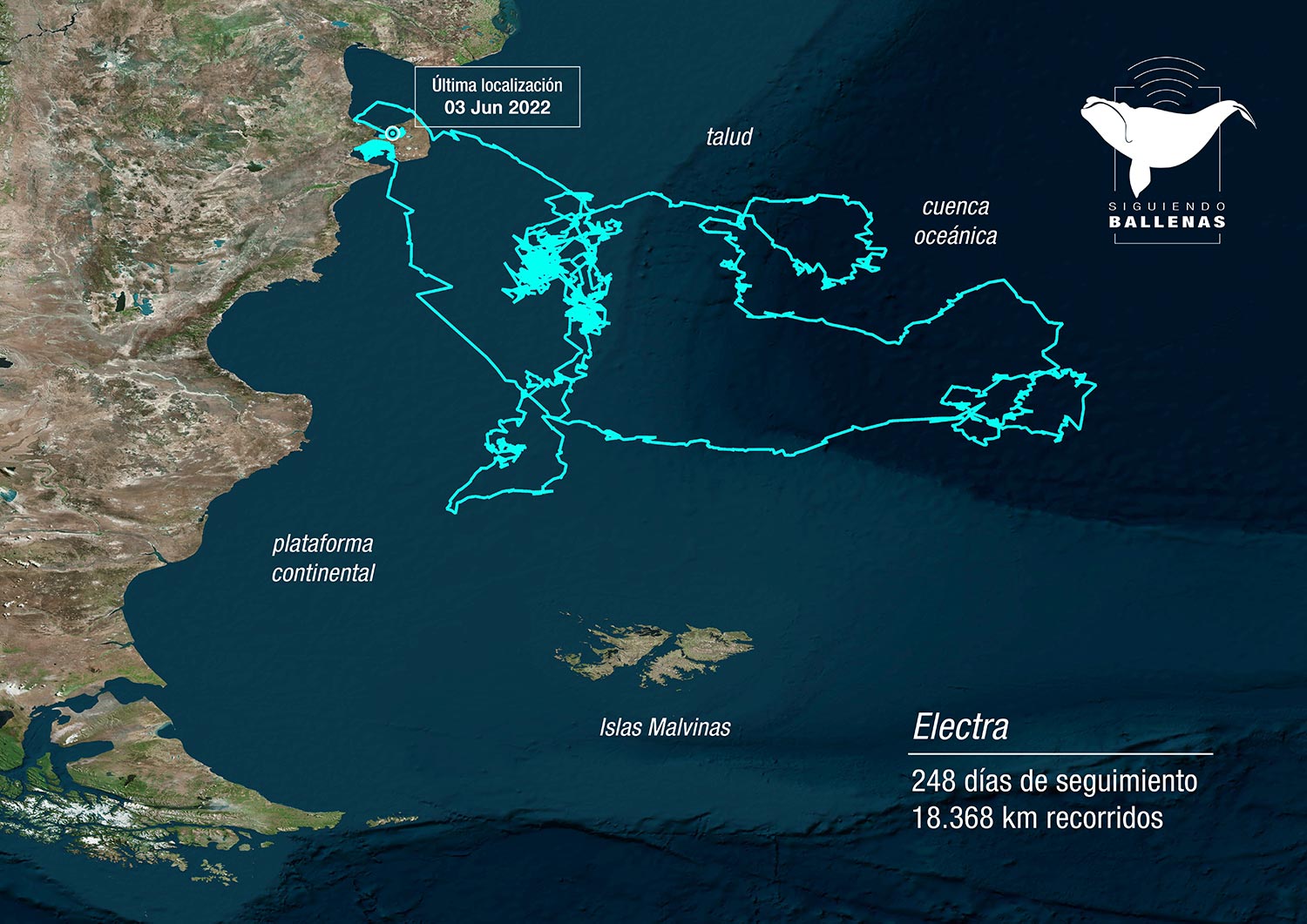
The only previous record of a complete migratory journey was made by “Papillon”, a male juvenile tagged in 2014, during the first season of the project. This new record is of great importance because this was a female with calf, and during their migration they are subjected to enormous physical energy demands. Knowing the areas and distances traveled in their complete migratory route is a major contribution to our knowledge of this species. More information.
ANDROMEDA AND THE FARTHEST SOUTH RECORD
Andromeda’s satellite device transmitted information for 254 days, while traveling 12,344 kilometers (7,670 miles). During that time Andromeda passed through the sub-ant-arctic seas, explored the Weddell Sea between February and May of 2022, in an area just northeast of the Antarctic Peninsula. She then returned to the Scotia Sea. We lost contact with her on June 8, 2022, when Andromeda was between the Islas Orcadas (South Orkney Islands) and the southernmost tip of the Islas Sandwich del Sur (South Sandwich Islands) archipelago. Of all the mothers with calves tracked in this project, Andromeda is the one who broke the record for traveling the farthest south when she passed latitude 66°S.
Throughout their travels between reproductive and feeding areas, the whales of Valdés traverse the exclusive economic zones of different countries, and the adjacent international waters. This record emphasizes the need to coordinate efforts for their conservation throughout the region.
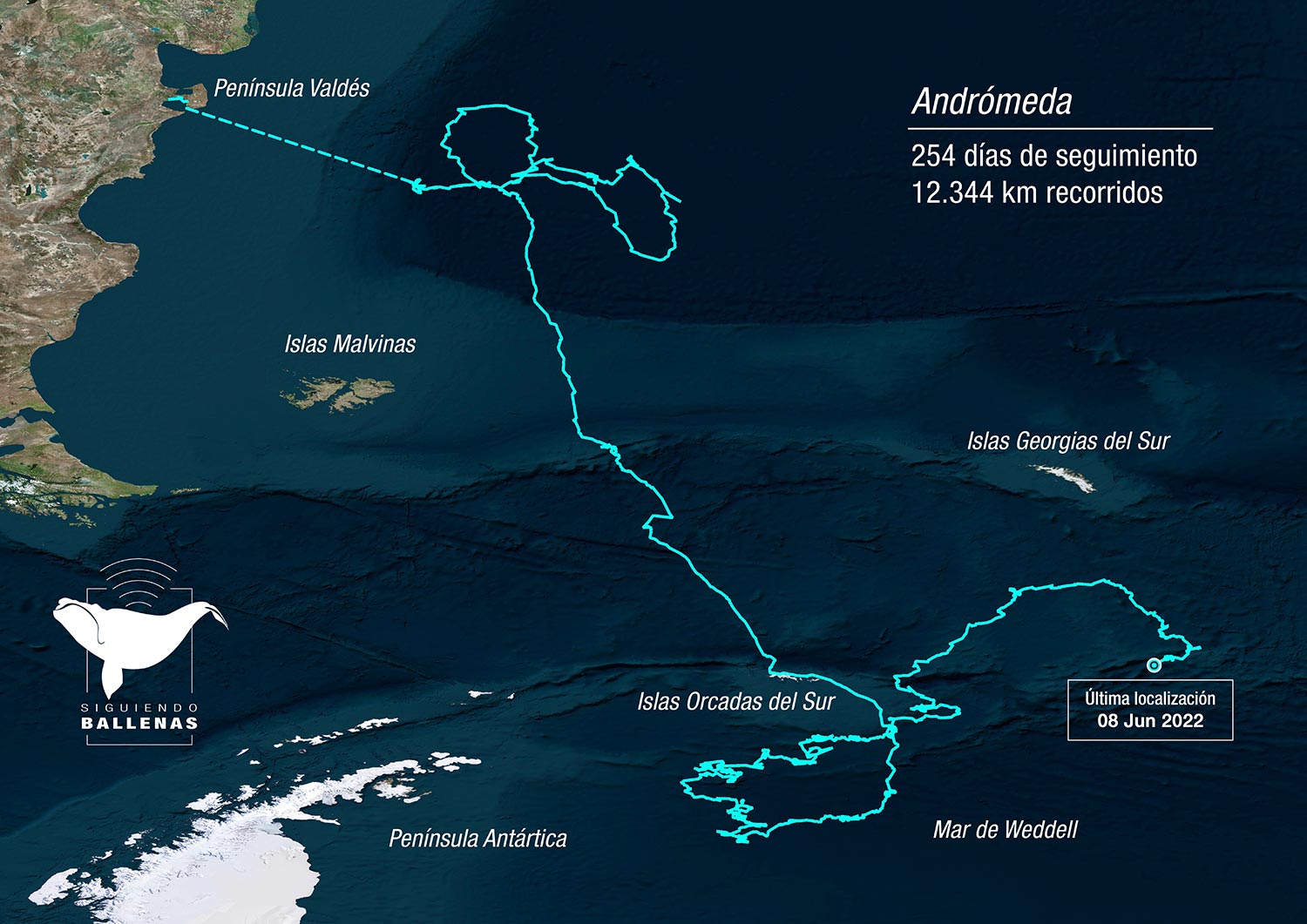
ANTARES AND THE UNPRECEDENTED RECORD OF A WHALE´S MIGRATION ROUTE IN DIFFERENT YEARS
This year we were also able to see, for the first time ever, the route taken by the same whale in two different years – information which had never been recorded for this species: in 2015 as a solitary female and again in 2021, together with a new calf. Antares is an adult female who was with her calf in Golfo Nuevo, Peninsula Valdés in 2021 when she was tagged with a satellite device on September 27. No one knew at the time that Antares was the whale named Atrevida, a whale tracked by satellite in 2015. The discovery of her identity was possible because of the existence of a whale photo-identification catalogue kept for the last 50 years by the Instituto de Conservación de Ballenas (ICB).
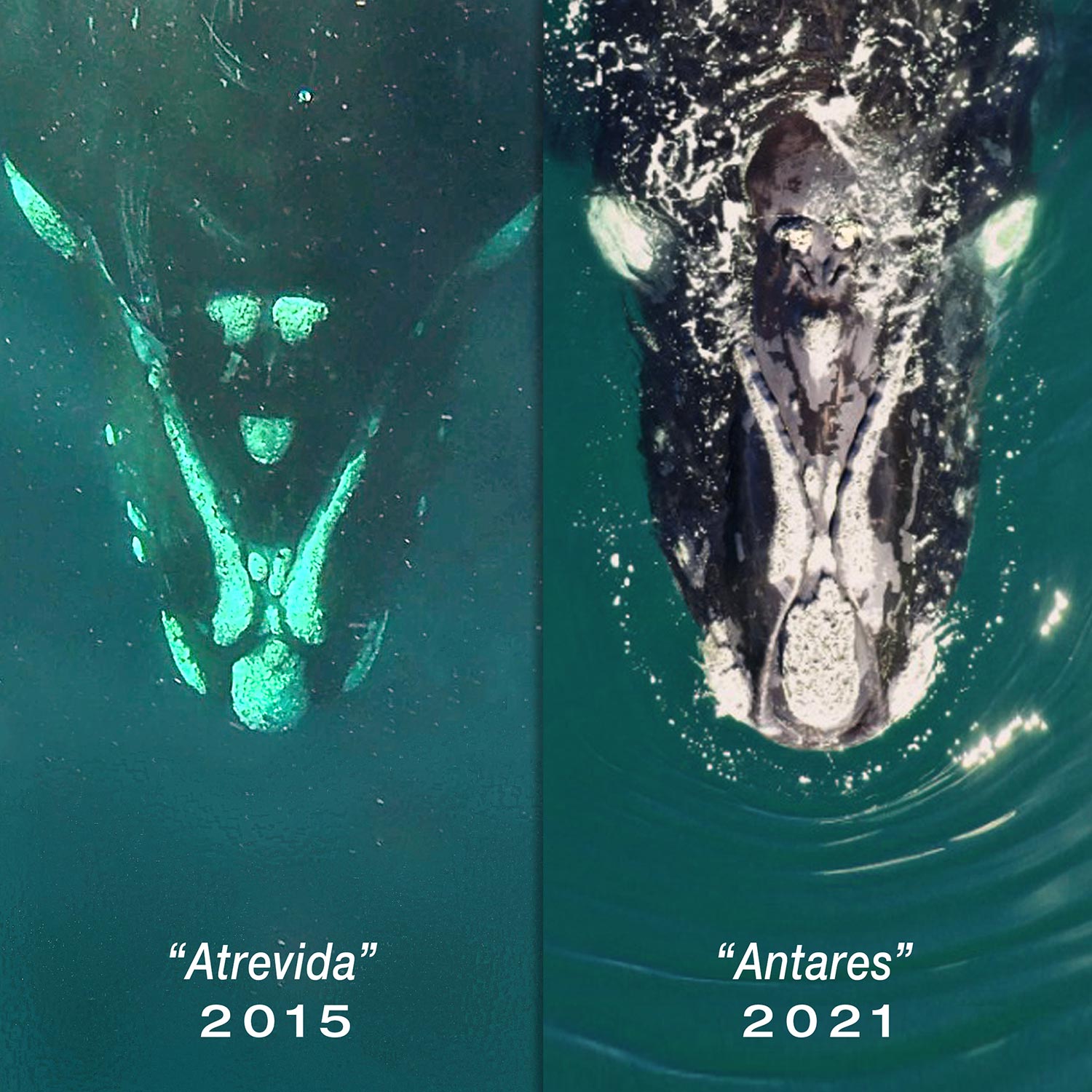
The differences in routes taken by Atrevida/Antares in 2015 and 2021, could indicate that the female Right Whales select feeding areas differently depending upon their reproductive status. This information makes it possible for us to promote the protection of essential sites during critical stages of their life cycle, such as when they are nursing their calves during their migration. More information
WHY DO WE TRACK WHALES?
Although commercial hunting is no longer a threat to this species and the population of Peninsula Valdés continues growing, diverse human activities constitute growing risks to these large mammals. Of these, collisions with seagoing vessels, entrapment by fishing equipment, offshore seismic exploration, contamination of coastal waters and the growing effects of climate change are all threats to their survival.
Information gathered when tracking whales permits us to emphasize the importance of Marine Protected Areas in their conservation and is a valuable resource when recommending regulations on activities (fishing, shipping and petroleum industry) which constitute a potential impact on whales and other marine species. It also highlights the importance of the gulfs of Peninsula Valdés in their reproduction, and for the development of whale watching tourism.
The results of the present season’s satellite tracking, together with the results obtained in previous years and those that arise from future surveys, will provide information of enormous relevance in the management and conservation of this emblematic species.
—–
PRESS CONTACT:
Florencia Lemoine, Coordinadora de Comunicación WCS Argentina, +11 33171923, flemoine@wcs.org